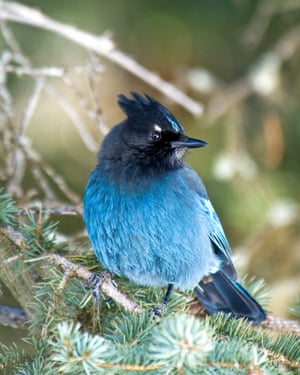There are few animals more iconically Canadian than the moose and the beaver, and few plants more closely associated with the country than the maple leaf.
But while those species have long considered part of the nation’s ecological identity they are also found elsewhere.
So Canadians might be better off making the Peary caribou and Vancouver lamprey their national animals, and placing the hairy braya on the national flag as a new report for the first identifies species unique to Canada – and warns that many are at risk.
Two years in the making, Ours to Save has identified 308 species and subspecies that are only found within the country’s borders.
A collaboration between the Nature Conservancy of Canada and NatureServe Canada, the report was intended to document which species are endemic to the sprawling country. But the authors soon found that many were facing the threat of extinction.
“No other nation can protect this group of all-Canadian species. Their conservation is completely up to Canadians,” Dan Kraus a senior conservation biologist at the Nature Conservancy of Canada, said in a statement released with the report.
Only 10% of Canada’s endemic species are considered “globally secure” or “apparently secure”, according to the report. The authors also said they were unable to find enough information to fully assess the status nearly one-third Canada’s endemic species.

Canada, the world’s second-largest country, has previously pledged to set aside 17% of its land and freshwater areas for protection by the end of the year. At the same time, the country is increasingly vulnerable to the effects of the climate crisis: forest fires, flooding and erosion – all of which affect the viability of endemic species.
“Many of Canada’s national endemic species have restricted ranges, which makes them particularly vulnerable to habitat loss, climate change and invasive species,” Patrick Henry, executive director of NatureServe Canada, said in a statement.
The delicate white petals of the rare hairy braya are only found along narrow section of northern coast of the Northwest Territories, an area highly threatened by the climate crisis and rising sea levels.
The flower, long known to Indigenous populations, was first collected by Europeans during the Franklin expedition in 1826. Journals from the expedition were used to relocate this wildflower – part of the mustard family – more than 150 years later.
Others, like an aster plant in New Brunswick, exist in a select few locations along the shores and salt marshes of the Gulf of St Lawrence – and are threatened by coastal development and sea level rise.
Some, like the carlottae subspecies of the darkly coloured Steller’s jay, underscore the fact that while much of the country was blanketed by glaciers 10,000 years ago, other pockets remained ice-free, allowing species to thrive and become genetically distinct from landlocked counterparts.
Because of its unique geography, the province of British Columbia has the highest concentration of endemic species, such as the Vancouver Island marmot and water shrew.
Regions like the rugged Haida Gwaii archipelago on the province’s west coast, where the largest Steller’s jay subspecies is, is also dubbed a “hotspot” by the report for its preponderance of including slugs, moss and beetles.
While most of the species in the report are insects or plants, a number of mammals are also unique to the country – and are also reflective of habitat degradation and overhunting.
The Wood bison, which thrives in Wood Buffalo national park, was wiped out in the US. And the whooping crane only has wild breeding populations left in Canada, despite efforts elsewhere to revive the species.
The eastern wolf, which cross-breeds with both larger grey wolves and smaller eastern coyotes, once romaed into the north-eastern US, but now its howls are largely only heard in Ontario’s Algonquin park.
“Protecting these species is Canada’s priority in the fight against global biodiversity loss,” said Kraus. “The consequence of our failure to conserve them is their extinction.”